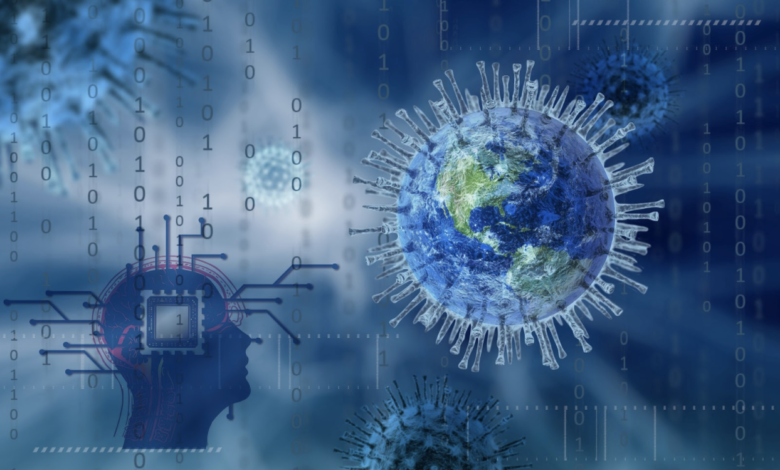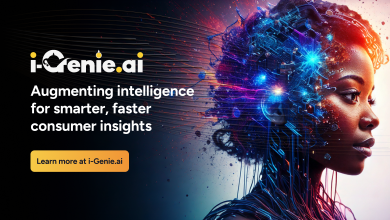
2020 – The year of the rat…Or was it a bat?
Ok, so can we all agree that 2020 was a pretty crappy year…!?
Our lives were changed forever, due to an invisible enemy that suffocates us, can jump from person to person with as little as a passing greeting, and has caused all of our usual habits to be flipped upside-down! Of course, we’re talking about SARS-CoV-2, or Covid, for short.
It was a year that saw the vast majority of people locked inside their homes to stop its [Covid] spread. Slowly losing our sanity in-between the monotonous homeschooling, and trouser-less work video meetings, amongst background chatter of “is Paul on yet? …guys I think we just lost Pau…Oh wait! Paul’s back on everyone”…!
In many ways though, the life-or-death urgency to understand more was the driving factor in advancements in the world of technology, medicine, and general innovation. However, the subject I want to talk about today has been around long before Covid. In fact, two subjects – The first being Big Data, and the second being the only way that us mere mortals can make sense of Big Data. This being GPU Accelerated Analytics. That’s a mouthful, I realise so let’s use GPUAA to save my sanity!
What is GPU Accelerated Analytics
Accelerated analytics, is not that different from ‘ordinary analytics’ that you’re probably used to. ‘Ordinary analytics’ tends to deal with much smaller datasets, meaning that TTI (Time-To-Insight) is often well within reasonable timeframes for an analyst to work with. Albeit with the help of standard analytics software that we’re all probably familiar with.
However, when you’re dealing with vast amounts of data, and the sort of datasets being looked at in the fight against Covid, ordinary analytics capabilities just aren’t going to cut the mustard!
This is where the advanced capabilities of GPU accelerated analytics steps things up a gear, and provides the sort of speed required to gain any useful insight from the data, and visualise this in a format, understood by the human brain. Albeit, the advanced human brain of a scientist. (#Scientistsaremyrockstars!)
What is big data
The term ‘big data’ is often referred to in relation to the business world, and regarding the datasets analysed for business purposes. However, it is not just the business world that uses the term. A simpler definition would be “datasets that are so big, come in such fast velocity, or, are so complex, that it is almost impossible to process by using standard methods.
Doug Laney characterised the term “Big Data” by using the ‘3 V’s’ definition. These being:
Volume – The sheer amount of data being processed.
Velocity – The speed at which this data is being generated/needs to be processed.
Variety – The number of different types of data being processed.
A common misconception from anyone new to the term ‘big data’, is that it only refers to the volume/the amount of data needing to be processed. However, as the 3 V principal shows us, it’s a lot more than this.
If you want to read more about big data, there is a fantastic research paper written by Ripon Patgiri and Arif Ahmed who include a number of other V’s to this definition, including “Veracity, Value, Visibility, and many more. You can read the paper here, titled: Big Data: The V’s of the Game Changer Paradigm.
How GPU Accelerated Analytics is being used in the fight against covid
So, whilst many of us (apart from key workers – Massive respect to all the key workers out there!) were conducting ‘pants-less Zoom calls’ and wrangling our children to do some work Behind the scenes, researchers, doctors, engineers, entrepreneurs, and scientists of all disciplines, worked day and night in their respective fields of study to come up with various ways to fight the pandemic.
Included in this extremely talented group of individuals, were some of the most brilliant data scientists from around the world, who were looking at sets of data in an attempt to garner any useful insights available, and to use these insights in ways to fight against further infections and ultimately, deaths!
To do this requires the analysis of huge and varied datasets to pick up on patterns or correlation which may lead to advanced medical, geographical, or myriad other insights. Like we have discussed above, the normal methods for analysing this data were not going to be of any use here. Ordinary data visualisation was not an option.
So with the use of GPU accelerated analytics, data scientists started their work. This included sharing data from multiple organisations. The aggregation of this data would not have been possible without the use of GPUAA (GPU Accelerated Analytics), nor would we have been able to use the insights. For example: Quite early on in the pandemic, the university of Mascetchusis, led by Andrew Chan, MD, MPH, developed The Covid symptom checker app. The app was able to correlate the symptoms of millions of users, and then use this data, via the use of artificial intelligence, to more accurately predict where the next outbreaks of the virus may occur. This included risk factors such as underlying health conditions, diabetes or obesity, and the symptoms of millions of users.
Other data is collected on a massive scale by various other organisations, and analysed with GPUAA includes GPS location, who you have been in contact with, symptoms, reactions and side effects to new treatments & drugs, and general qualitative data around how you are feeling.
All of this data is then analysed and used to inform government decision-making. Some of the outcomes of this may include localised lockdown measures, public health advice, mask mandates, and many more.
How else can GPU Accelerated Analytics be used in relation to healthcare?
Anyone who understands data analysis, even of the most simple kind, knows that it is used to mainly in predicting the outcomes of certain situations. Whether this relates to the business world, or much larger, governmental decision making, the end goal is always the same. Use the past, to inform actions in the future. Carl Sagan said – “You have to understand the past, to understand the present” and this is the whole ethos behind data analysis.
In the business world, this often refers to decision making that will lead to increased sales / corporate profits, and indeed there is a whole industry built around gathering this kind of information. It is the sole focus of some marketing & digital agencies and has created an industry and huge ecosystem of companies, software and products alike.
However, perhaps a more worthwhile use of this new technology is in the world of healthcare.
Some of the additional non-Covid related, healthcare decision making, that requires GPUAA includes the analysis of data related to:
- Predicting future opioid abusers
- The requirement for increased hospital staffing
- EHR (Electronic Health Records) monitoring, ie – alerting prescription changes and lab testing requirements
- Disease & Risk management
- Health insurance policy accuracy
The lists of use cases are vast to say the least. However, one thing is clear, that the health and wellbeing of our population can be greatly improved via the use of this technology.
Conclusion
So, it’s clear now to more of us than ever, that our data is being analysed on an unprecedented scale. There have been plenty of outspoken commentators regarding the collection and use of our data from the apps and services we use in our daily lives. Much of this commentary being negative, and raising genuine concerns around privacy. Add to this the most recent “hooHar” around the change in the Terms & Conditions for one of our most beloved apps – WhatsApp, (more on this in my next article) and you’ll understand that privacy and data is certainly a hot topic!
However, other recent events, most notably the pandemic, have given rise to the clear benefits of having accelerated analytics technology to make sense of Big Data. We can use this technology as a force for good, and literally help save lives. Of course, we need to be careful with our data, and it’s entirely possible that more nefarious reasons for data collection can, and are being used. But this certainly isn’t one of them, and without the use of accelerated analytics technology, it would literally take us years to decipher any form of useful insight from the data being collected.




